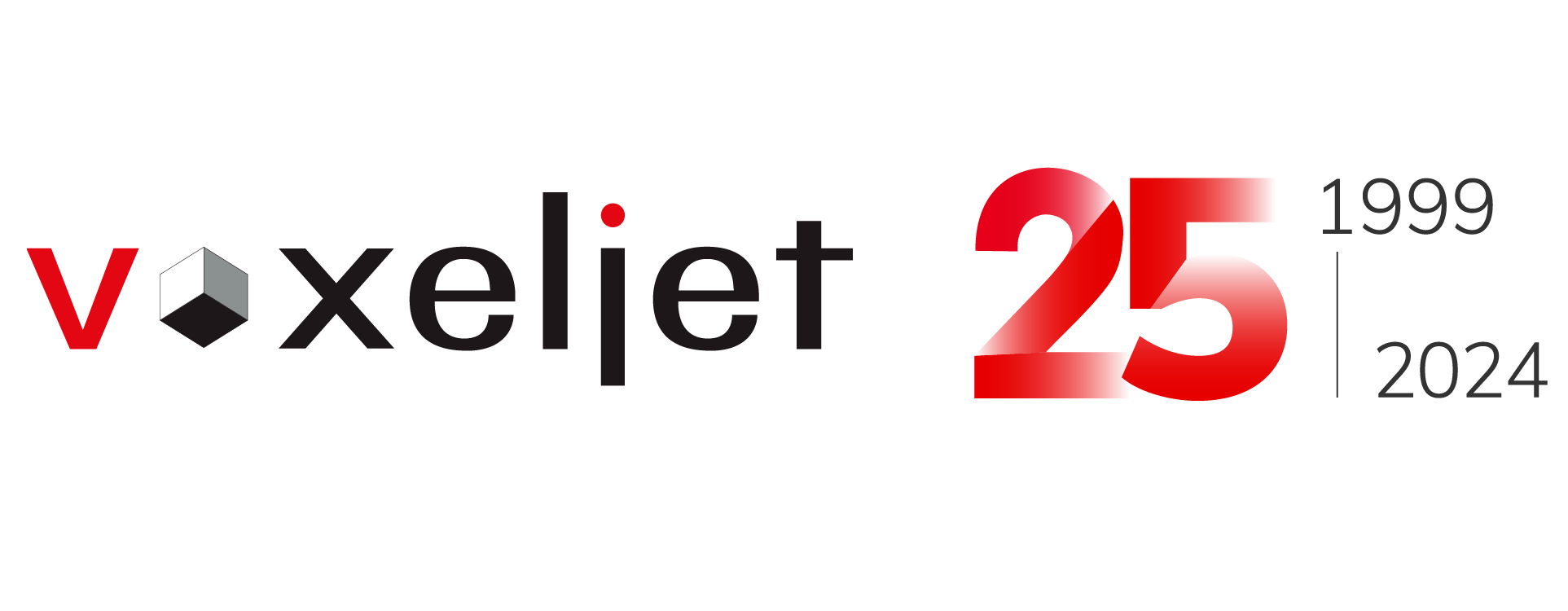- Home
- Additive Manufacturing
- 3D Printing Processes
- Stereolithography
Stereolithography (SLA) & 3D Printing
Stereolithography is to 3D printing what patent No. 37435 is to the automotive industry. The beginning. In 1886, Carl Benz registered his “vehicle with gas engine operation” under this number, laying the foundation for the automotive industry of today.
Almost 100 years later, in 1984, Chuck Hull filed his patent: “Stereolithographic apparatus and method for making three-dimensional objects”. It is considered the first patent for a 3D printing process. Today, stereolithography, or SLA, is one 3D printing process of many, but it will always remain the first. While we don’t work with SLA at voxeljet, in some ways the stereolithography process is the foundation of our binder jetting technology. Reason enough to take a closer look at SLA 3D printing.
What is stereolithography (SLA)?
Stereolithography is an additive manufacturing process in which a liquid photopolymer resin, also known as resin, is cured layer by layer using a UV laser.
3D SLA printers range from small, desk-top versions for makers to larger, industrial systems. Components produced using the SLA printing process feature smooth surfaces with very high precision and dimensional accuracy. Because of these characteristics, SLA printers are used in a variety of industries, from automotive to dental.
How does SLA printing work?
Stereolithography works similarly to other 3D printing technologies. It is based on CAD data and builds up a tangible object layer by layer. Instead of a powder or filament, a liquid, light-sensitive resin or resin is cured with a UV laser.
To do this, a build platform is lowered into a resin bath. The build platform then rises again, but remains a layer thickness below the surface of the resin. A laser now scans the structures of the component and cures the resin at these points. The build platform lowers one layer thickness into the bath, and a squeegee smoothes the surface of the resin. Now the laser cures the next layer. These steps repeat until the desired model is fully printed.
After 3D printing, the SLA models are separated from the build platform and any support structures that were printed along with them are removed. Finally, the models are chemically cleaned. After that, they are ready for use.
How did SLA printing technology come into being?
The first attempts to produce three-dimensional objects using resins and UV light were made by Japanese scientist Hideo Kodama. Chuck Hull built on this in 1984 and filed the patent for stereolithography. At the time, the physicist was working for a furniture company. They say necessity is the mother of invention, and it was precisely this motivation that prompted Hull to look for a way to shorten prototype development times. His employer provided him with a small laboratory that he could use in his spare time to develop his idea of stereolithography. After the patent was granted, Hull founded 3D Systems the same year, a company that is still active today, to market the technology.
What are the benefits of SLA printing?
Components produced with 3D printer stereolithography are characterized by particularly smooth surfaces as well as high precision and dimensional accuracy. Stereolithography can thus be used to produce prototypes quickly and cost-effectively. Similar to other 3D printing processes, only the material that is technically necessary for the respective component is consumed. Resin that has not hardened can be reused. In addition to solid and functional components, flexible plastics such as TPU can also be processed using SLA.
How is SLA printing different from other 3D printing processes?
The main differences between SLA printers and other processes lie in the aggregate state of the operating materials and in the binding or curing energy source. Most 3D printers work with solid materials such as powder materials or plastic strands. The SLA printing process, on the other hand, works with liquid plastics. The binding component varies among 3D printing technologies from chemical binders to heated nozzles to lasers. Stereolithography relies on UV light to react with the photosensitive polymer resin and transfer it to the solid state.
How does stereolithography compare to voxeljet’s Binder Jetting technology?
Stereolithography and voxeljet’s Binder Jetting technology differ in size, materials, and applications. Stereolithography is primarily used for functional prototyping, patterns, molds, and tooling. Comparatively, voxeljet’s Binder Jetting process covers a wide array of industrial prototyping, metal casting, and end use parts applications. Because of SLA’s use of a UV-laser and liquid resins, the technology can achieve high resolution, surface quality and accuracy in the printing process. The build volume for SLA printers is up to 527 x 296 x 550 mm whereas voxeljet’s VX4000 printer for sand is 4 x 2 x 1 meters with a print volume of up to 111 liters per hour. SLA and Binder Jetting also have significant material differences. SLA utilizes polymer based or composite resins which print parts into mostly plastic and other materials such as ceramic, whereas voxeljet’s Binder Jetting technology can print into a variety of sand, ceramics, and plastic. Binder Jetting technology offers a speed-lined production process for prototypes and end use parts for industries such as the automotive sector. SLA can be applied for dental, automotive and industrial purposes.
Industrial 3D Printing Systems
Our portfolio of industrial 3D printers ranges from compact systems for research to additive mass production.


















